
Therapies Targeting ASD Core Symptoms


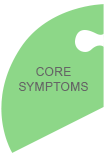
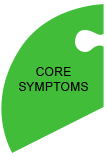
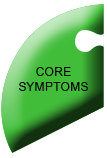
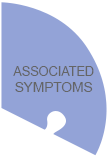
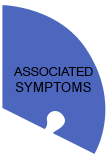
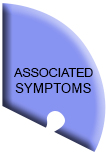
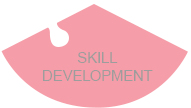
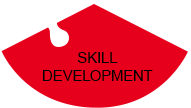
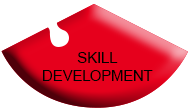
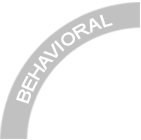
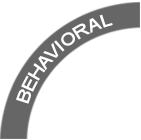


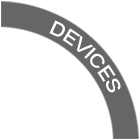
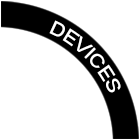
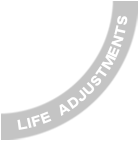
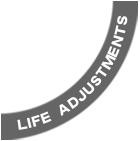
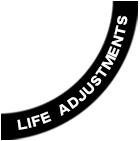
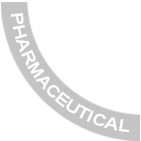


Often the symptoms of Autism Spectrum Disorder (ASD) are broken down into “core symptoms” and associated symptoms. Core symptoms are the fundamental aspects of ASD that are present in all individuals diagnosed with this disorder, while the associated symptoms may or may not be present in an ASD individual. To date, there are no FDA-approved drugs to treat the core symptoms of autism.
According to the Diagnostic and Statistical Manual of Mental Disorders 5 (DSM-5), released in May 2013, an individual with ASD must show deficits under two broad categories:
1. Deficits in social interactions and communication
2. Restricted or repetitive patterns of behavior and interests
Below, you will find a selection of evidence-based and emerging therapies that target one or more ASD core symptoms:
 Applied Behavior Analysis (ABA) is among the most supported, evidence-based therapies for the core symptoms of autism. ABA is a type of behavioral therapy—a treatment approach that relies on the monitoring of observable progress in response to systematic behavioral instructions. In behavioral therapy, all aspects of the child’s functioning, including developmental skills, social deficits, and problem behaviors, are thought to result from a child’s interaction with his or her surroundings.1
Applied Behavior Analysis (ABA) is among the most supported, evidence-based therapies for the core symptoms of autism. ABA is a type of behavioral therapy—a treatment approach that relies on the monitoring of observable progress in response to systematic behavioral instructions. In behavioral therapy, all aspects of the child’s functioning, including developmental skills, social deficits, and problem behaviors, are thought to result from a child’s interaction with his or her surroundings.1
Behavioral therapy aims to utilize this theory by providing an environment that is conducive for developmental progress.ABA uses the principles of behavioral therapy to elicit positive changes in an individual’s behavior. Both Wikipedia and Autism Speaks provide detailed information about ABA techniques and benefits for autism.
 Research has shown that earlier interventions for ASD, such as the Early Start Denver Model (ESDM), are associated with better outcomes, including improved IQ, language, and adaptive behaviors like recognizing faces.ESDM is a behavioral-based therapy for children with autism who are 12 to 48 months old. Trained therapists use ESDM-based interventions at clinic, special schools, and home during the child’s playtime and normal daily routines. Rather than focusing on one domain, the ESDM program aims to improve all areas of development. In particular, the ESDM program addresses social-emotional, cognitive, and communication deficits. Autism Speaks provides a nice review of ESDM.2
Research has shown that earlier interventions for ASD, such as the Early Start Denver Model (ESDM), are associated with better outcomes, including improved IQ, language, and adaptive behaviors like recognizing faces.ESDM is a behavioral-based therapy for children with autism who are 12 to 48 months old. Trained therapists use ESDM-based interventions at clinic, special schools, and home during the child’s playtime and normal daily routines. Rather than focusing on one domain, the ESDM program aims to improve all areas of development. In particular, the ESDM program addresses social-emotional, cognitive, and communication deficits. Autism Speaks provides a nice review of ESDM.2
In one study, researchers show that ESDM leads to a better response to stimuli by the brain’s prefrontal cortex. In the study, scientists used electroencephalography (EEG)—a test that measures electrical activity along the scalp—on children between 18 and 30 months of age. After two years, the cortical activity of children with autism who participated in ESDM approximated that of children without ASD when they were shown images of faces.3 The findings demonstrate that the brains of children with ASD can process social stimuli in a typical manner when the disorder is addressed early in life using ESDM. Thus, the severity of ASD can possibly be allayed by way of early intervention.
 Based on the Early Start Denver Model, Infant Start is another promising early intervention. Infant Start is a parent-led behavioral intervention that emphasizes parent-child social interactions from infancy.
Based on the Early Start Denver Model, Infant Start is another promising early intervention. Infant Start is a parent-led behavioral intervention that emphasizes parent-child social interactions from infancy.
In a study at University of California, Davis, MIND Institute, symptomatic infants between seven and 15 months of age, and their parents, participated in a 12-week, low-intensity pilot program. During weekly sessions, highly trained therapists coached parents in individualized behavioral therapies, which parents continued in the home environment. By 18 months, the children who participated in Infant Start had significantly fewer autism symptoms than the children of families who chose not to enroll in the pilot study.4 This study supports the idea that very early treatment for autism may alleviate some of the core symptoms associated with the disorder.
 Pivotal Response Treatment (PRT) is a child-led, play-based intervention intended to address target—or “pivotal”—areas of a child’s development, including motivation and initiation of social interactions. By focusing on these areas, PRT aims to induce broad social, behavioral, and communicative improvements in children with Autism Spectrum Disorder (ASD).
Pivotal Response Treatment (PRT) is a child-led, play-based intervention intended to address target—or “pivotal”—areas of a child’s development, including motivation and initiation of social interactions. By focusing on these areas, PRT aims to induce broad social, behavioral, and communicative improvements in children with Autism Spectrum Disorder (ASD).
In 2014, researchers reported in the Journal of Child Psychology and Psychiatry that parent-administered PRT in the home setting led to significant improvement in the number of utterances—such as saying “ball” to receive a ball. Future studies could better examine PRT impact on social skills and determine the ideal balance of clinical interventions and at-home therapy.5
 Communication deficits in autism may range from being nonverbal to having minor difficulties with speech and language. Speech therapy is an evidence-based approach that helps autistic individuals develop an effective means of communication. A highly trained therapist, called a speech-language pathologist, works closely with individuals, family, and supporting community to develop a tailored program according to each individual’s needs.Speech therapy can begin at any age, but earlier treatment is better. To learn more about speech therapy techniques and benefits, please visit the “Benefits of Speech Therapy for Autism” page of WebMD.
Communication deficits in autism may range from being nonverbal to having minor difficulties with speech and language. Speech therapy is an evidence-based approach that helps autistic individuals develop an effective means of communication. A highly trained therapist, called a speech-language pathologist, works closely with individuals, family, and supporting community to develop a tailored program according to each individual’s needs.Speech therapy can begin at any age, but earlier treatment is better. To learn more about speech therapy techniques and benefits, please visit the “Benefits of Speech Therapy for Autism” page of WebMD. Oxytocin is a hormone that is produced in the brain and released into the bloodstream and central nervous system, where it binds to oxytocin receptors on cells. Its role in helping labor contractions was discovered in the early 1900s, but more recently scientists have examined oxytocin’s ability to mediate social behaviors, presumably by modulating activity in the amygdala—a brain area known to be involved in social and emotional information processing. Several studies have shown that an oxytocin nose spray affects social interaction in typically developing individuals.6,7
Oxytocin is a hormone that is produced in the brain and released into the bloodstream and central nervous system, where it binds to oxytocin receptors on cells. Its role in helping labor contractions was discovered in the early 1900s, but more recently scientists have examined oxytocin’s ability to mediate social behaviors, presumably by modulating activity in the amygdala—a brain area known to be involved in social and emotional information processing. Several studies have shown that an oxytocin nose spray affects social interaction in typically developing individuals.6,7
In a 2013 research report, researchers tested the effect of intranasal oxytocin supplementation on brain activity of adult individuals with ASD in response to social stimuli. Oxytocin supplementation significantly increased amygdala activity in response to faces.8
Ongoing clinical trials are testing if therapeutic oxytocin can alleviate social cognition difficulties in children with ASD. Also published in 2013, a small, randomized, double-blind study looking at brain scans of children receiving a single dose of nasal oxytocin showed increased brain activity in areas associated with motivation, higher information processing, sleep, decision-making, and social perception.9 While it used a small sample size, this study demonstrates that therapeutic oxytocin might help children with ASD respond more appropriately to social versus non-social stimuli.
 Some children with autism have deficits in antioxidant activity, which normally detoxifies cells. An antioxidant is a molecule that is capable of neutralizing damage causing free radicals—most people know of the antioxidant Vitamin C. Antioxidant protection is critical for the immune system and neurons, which are particularly susceptible to cellular damage.
Some children with autism have deficits in antioxidant activity, which normally detoxifies cells. An antioxidant is a molecule that is capable of neutralizing damage causing free radicals—most people know of the antioxidant Vitamin C. Antioxidant protection is critical for the immune system and neurons, which are particularly susceptible to cellular damage.
Nutritional supplementation aimed at increasing glutathione—an antioxidant known to be lower in some people with autism—improves autism-related behaviors, according to a report published in 2013. In the study, 40 children with autism who had low levels of active glutathione received supplements of methylcobalamin and folinic acid, factors in glutathione production and activation. The children made large gains in expressive communication, daily living skills, and various social skills with minimal side effects.10 This preliminary study warrants further investigation with a randomized, double blind trial.
Other researchers have reported that sulforaphane—an antioxidant present in vegetables like broccoli sprouts—may ameliorate autism symptoms. According to the researchers’ study, ASD behavioral assessment scores returned to baseline when they stopped sulforaphane administration.11
 Some doctors have reported that corticosteroid use improves language and behavior scores among children with regressive autism (R-ASD), which is marked by a period of normal early development followed by loss of previously acquired language and social skills. Corticosteroids are chemicals that mimic hormones naturally produced by the body. They act by suppressing inflammation and the immune system. Upon further investigation, the researchers found that corticosteroids increased activity in an area of the brain known for auditory processing and the perception of emotions.12 While this study was a small retrospective (the researchers used data from previously acquired measurements), it indicates a need for a larger controlled study of corticosteroid treatment for R-ASD with appropriate controls.
Some doctors have reported that corticosteroid use improves language and behavior scores among children with regressive autism (R-ASD), which is marked by a period of normal early development followed by loss of previously acquired language and social skills. Corticosteroids are chemicals that mimic hormones naturally produced by the body. They act by suppressing inflammation and the immune system. Upon further investigation, the researchers found that corticosteroids increased activity in an area of the brain known for auditory processing and the perception of emotions.12 While this study was a small retrospective (the researchers used data from previously acquired measurements), it indicates a need for a larger controlled study of corticosteroid treatment for R-ASD with appropriate controls.| Evidence Legend | |
|---|---|
 |
Research-supported – a therapy with the highest level of evidence for safety and effectiveness based on rigorous scientific research and well-controlled clinical trials. |
 |
Promising – a therapy that is being actively researched in scientific studies and clinical trials with promising results |
 |
Suggestive – a therapy that has been known for some time but is not actively researched at present OR a novel therapy having current research of one or two preliminary studies showing suggestive results |
 |
No evidence available – a therapy that lacks any evidence-based support for effectiveness or safety |
| References: |
|

